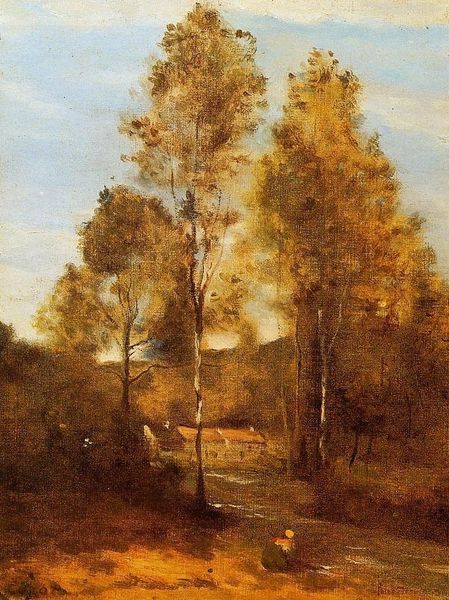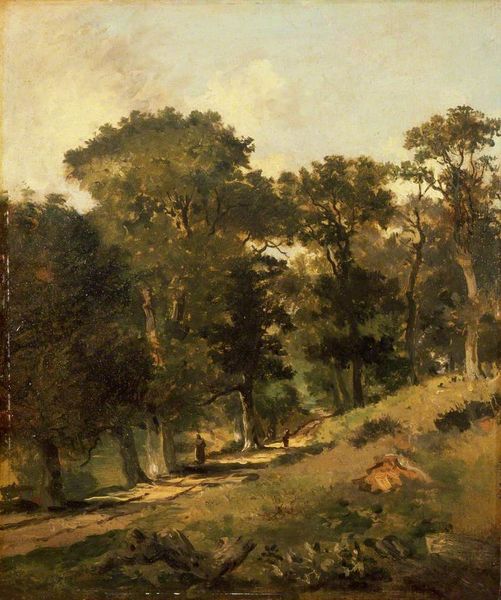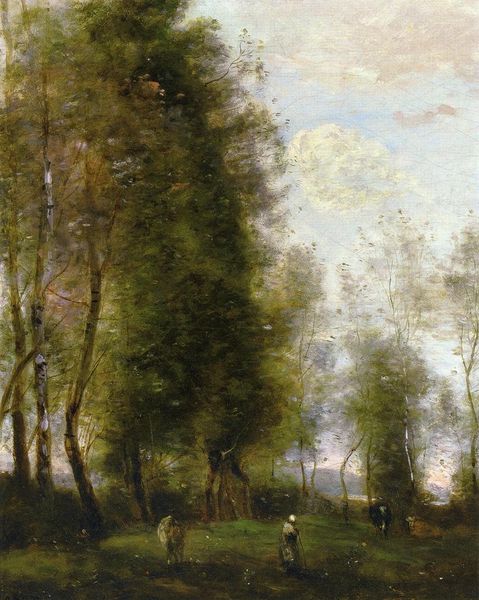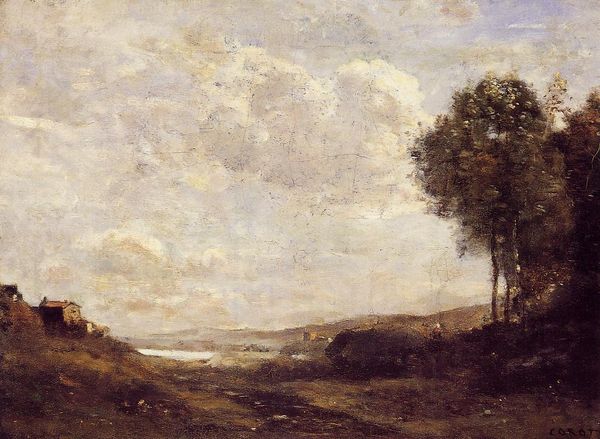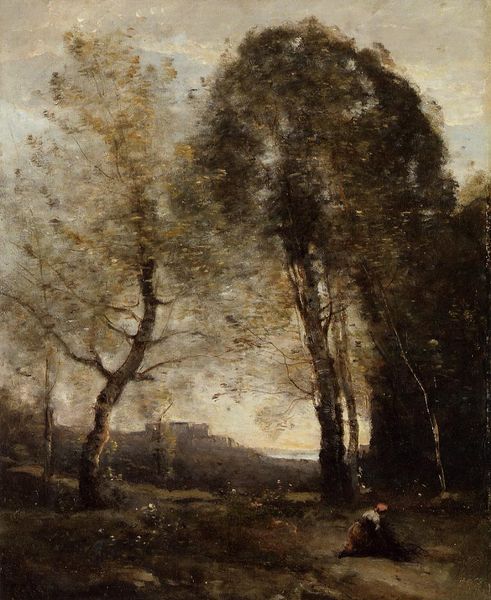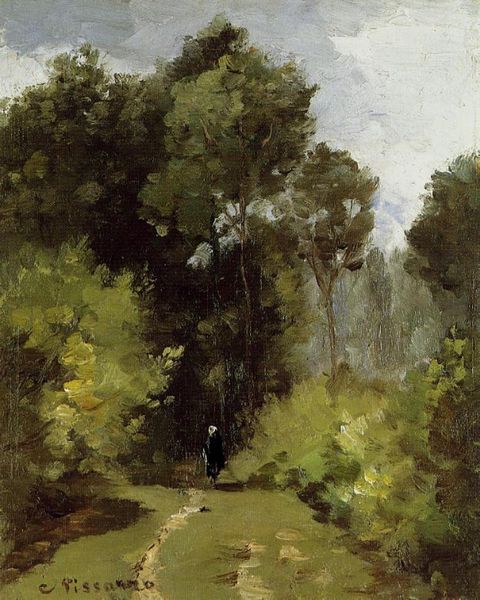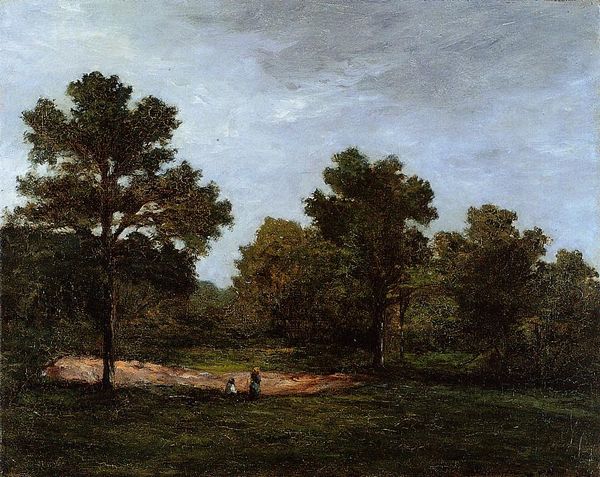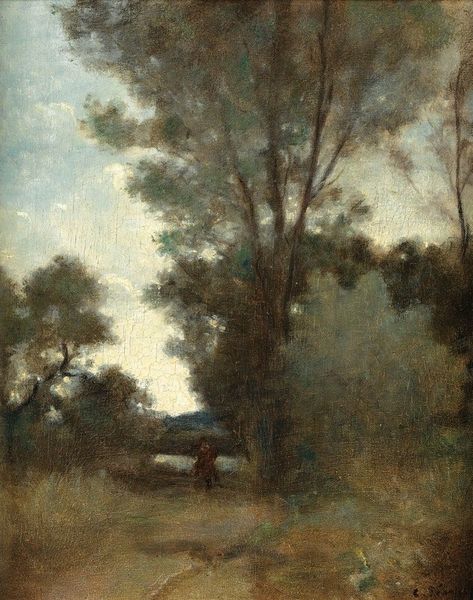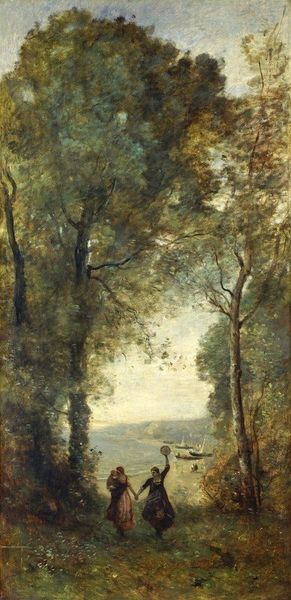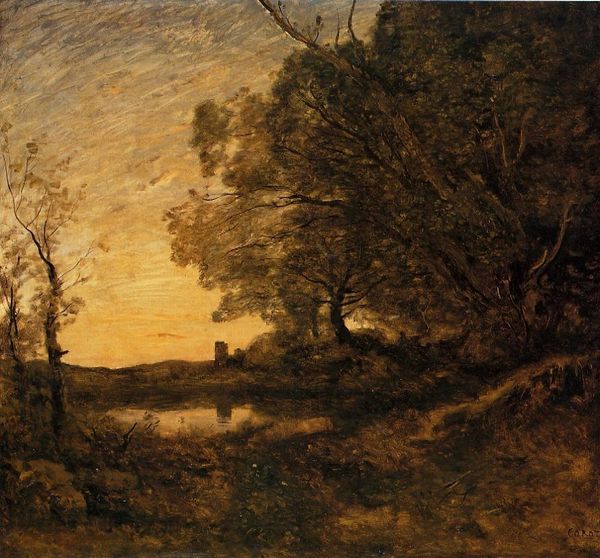
painting, plein-air, oil-paint
#
tree
#
painting
#
impressionism
#
plein-air
#
oil-paint
#
landscape
#
impressionist landscape
#
figuration
#
oil painting
#
forest
Copyright: Public domain
Paul Gauguin painted "The Forest Path" with oil on canvas in 1873. He made this work during a time when France was recovering from the Franco-Prussian War, and there was a longing for stability and traditional values. The painting depicts a solitary figure on a path surrounded by a dense forest. Gauguin uses muted colors and loose brushstrokes, which create a sense of tranquility. The path leads the viewer's eye into the painting. The figure appears small and insignificant against the vastness of nature, perhaps reflecting the individual's place in the world. During this period, the Académie des Beaux-Arts still held significant influence, but artists like Gauguin were beginning to challenge its conventions. Gauguin's move toward more personal and subjective expression was a departure from the academic style. To fully understand this work, we could explore Gauguin's biography, the art criticism of the time, and the political and social context of 19th-century France. By doing so, we can gain a deeper understanding of the artist's intentions and the painting's significance.
Comments
No comments
Be the first to comment and join the conversation on the ultimate creative platform.
